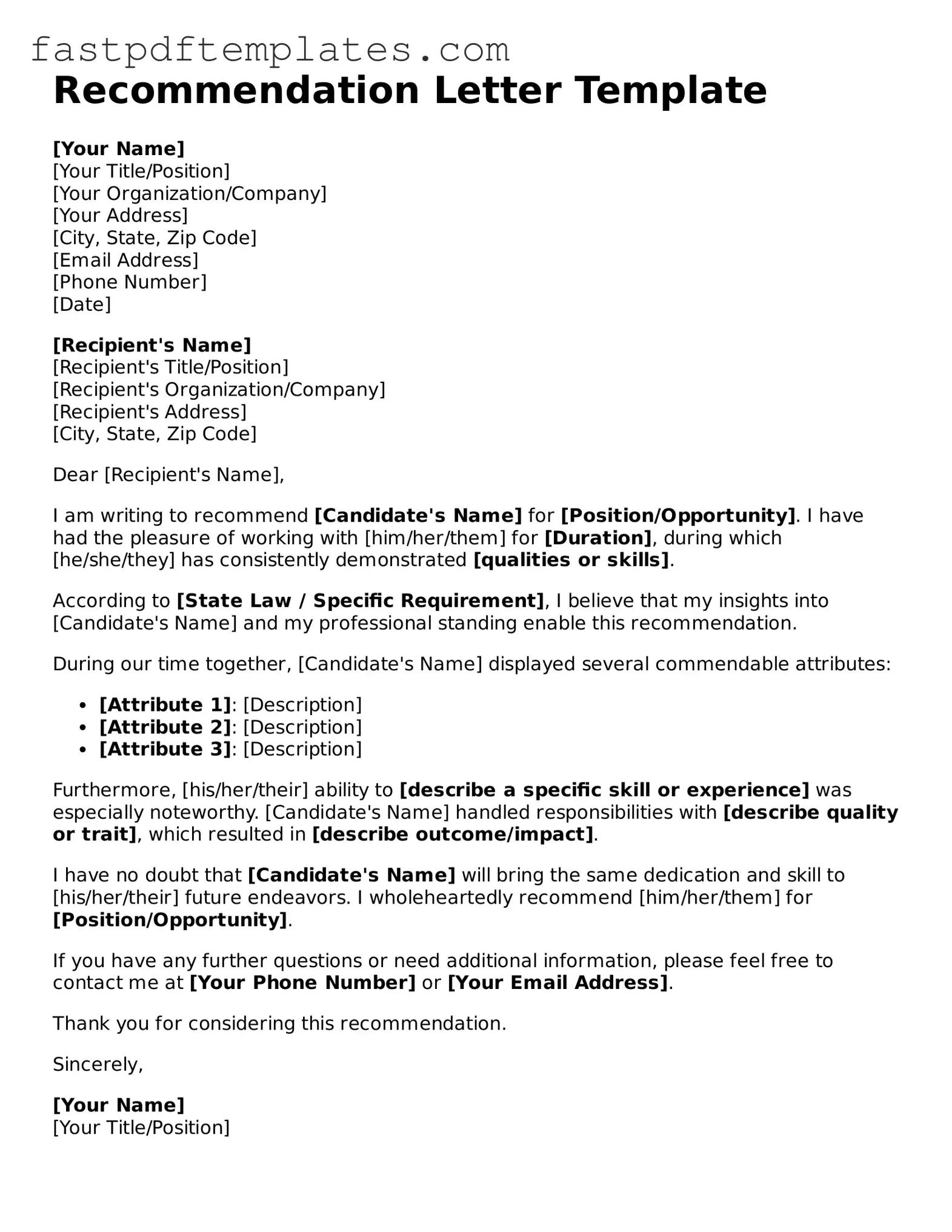Recommendation Letter Template
[Your Name]
[Your Title/Position]
[Your Organization/Company]
[Your Address]
[City, State, Zip Code]
[Email Address]
[Phone Number]
[Date]
[Recipient's Name]
[Recipient's Title/Position]
[Recipient's Organization/Company]
[Recipient's Address]
[City, State, Zip Code]
Dear [Recipient's Name],
I am writing to recommend [Candidate's Name] for [Position/Opportunity]. I have had the pleasure of working with [him/her/them] for [Duration], during which [he/she/they] has consistently demonstrated [qualities or skills].
According to [State Law / Specific Requirement], I believe that my insights into [Candidate's Name] and my professional standing enable this recommendation.
During our time together, [Candidate's Name] displayed several commendable attributes:
- [Attribute 1]: [Description]
- [Attribute 2]: [Description]
- [Attribute 3]: [Description]
Furthermore, [his/her/their] ability to [describe a specific skill or experience] was especially noteworthy. [Candidate's Name] handled responsibilities with [describe quality or trait], which resulted in [describe outcome/impact].
I have no doubt that [Candidate's Name] will bring the same dedication and skill to [his/her/their] future endeavors. I wholeheartedly recommend [him/her/them] for [Position/Opportunity].
If you have any further questions or need additional information, please feel free to contact me at [Your Phone Number] or [Your Email Address].
Thank you for considering this recommendation.
Sincerely,
[Your Name]
[Your Title/Position]
